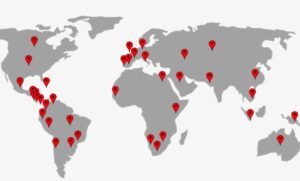Abstract
Child death and mothers who suffer from child death are a public health concern in Sub-Saharan Africa. The location and associated factors of child death and mothers who suffer child death were not identified. To monitor and prioritize effective interventions, it is important to identify hotspots areas and associated factors. Data from nationally representative demographic and health surveys and Multiple Indicator Cluster administrated in 42 Sub-Sahara Africa countries, which comprised a total of 398,574 mothers with 1,521,312 children. Spatial heterogeneity conducted hotspot regions identified. A mixed-effect regression model was run, and the adjusted ratio with corresponding 95% confidence intervals was estimated. The prevalence of mothers who suffer child death is 27% and 45-49 year of age mother 48%. In Niger, 47% of mothers were suffering child death. Women being without HIV knowledge, stunted, wasted, uneducated, not the household head, poor, from rural, and from subtropical significantly increased the odds of the case (P<0.05). The spatial analysis can support the design and prioritization of interventions. Multispectral interventions for mothers who suffer from child death are urgently needed, improve maternal health and it will reduce the future risk of cases.
Figure 1. Interpolation of mothers who suffer at least one child's death: the interpolated continuous images provided by the interpolation ordinary kriging. The color through bold blue to bold red indicates an increase in the prevalence of mothers who suffer from child death. This analysis was carried out at SAGA GIS

- Society

Membership
Support our mission by becoming a member

Public Health Policy Center
Explore the society's public health initiatives

Meet the community
See what our members have been working on
- Journal
- Author Center
- Membership